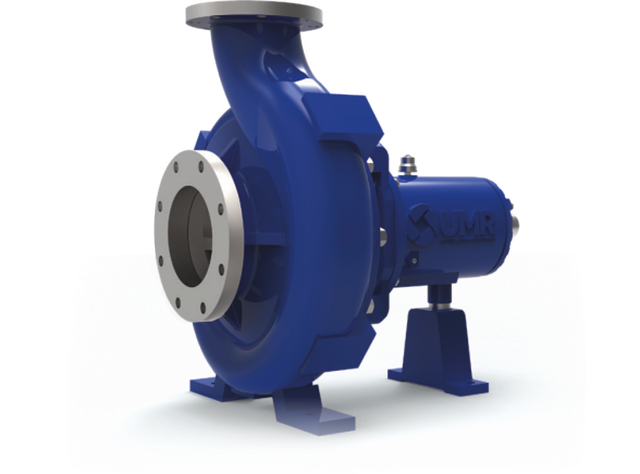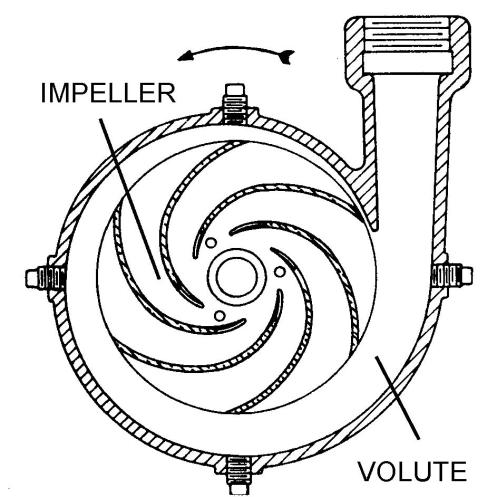
Joe Evans, Ph.D
http://www.pumped101.com
INTRODUCTION
Definition & Description
By definition, a centrifugal pump is a machine. More specifically, it is a machine that imparts energy to a fluid. This energy infusion can cause a liquid to flow, rise to a higher level, or both.
The centrifugal pump is an extremely simple machine. It is a member of a family known as rotary machines and consists of two basic parts: 1) the rotary element or impeller and 2) the stationary element or casing (volute). Figure 1 is a cross section of a centrifugal pump and shows the two basic parts.

Figure 1
The centrifugal pump’s function is as simple as its design. It is filled with liquid and the impeller is rotated. Rotation imparts energy to the liquid causing it to exit the impeller’s vanes at a greater velocity than it possessed when it entered. This outward flow reduces the pressure at the impeller eye, allowing more liquid to enter. The liquid that exits the impeller is collected in the casing (volute) where its velocity is converted to pressure before it leaves the pump’s discharge.
A Very Brief History
The centrifugal pump was developed in Europe in the late 1600’s and was seen in the United States in the early 1800’s. Its wide spread use, however, has occurred only in the last seventy-five years. Prior to that time, the vast majority of pumping applications involved positive displacement pumps.
The increased popularity of centrifugal pumps is due largely to the comparatively recent development of high speed electric motors, steam turbines, and internal combustion engines. The centrifugal pump is a relatively high speed machine and the development of high speed drivers has made possible the development of compact, efficient pumps.
Since the 1940's, the centrifugal pump has become the pump of choice for many applications. Research and development has resulted in both improved performance and new materials of construction that have greatly expanded it's field of applicability. It is not uncommon today to find efficiencies of 93%+ for large pumps and better than 50% for small fractional horsepower units.
Modern centrifugal pumps have been built to meet conditions far beyond what was thought possible fifty to sixty years ago. Pumps capable of delivering over 1,000,000 gallons per minute at heads of more than 300 feet are common in the nuclear power industry. And, boiler feed pumps have been developed that deliver 300 gallons per minute at more than 1800 feet of head.
About the Author
Joe Evans lives in beautiful Rhododendron Oregon and retired from PumpTech Inc on 12/31/15. Since entering graduate school, a continuing interest has been one of computer control of mechanical and electronic systems. It began with the introduction of the minicomputer, in the late sixties, and continued with the advent of the PC and PLC in the eighties and nineties. He accidentally entered the pump industry in 1986, and has been trapped there since. He is passionate about the sharing of knowledge and its ability to replace memorization with understanding.